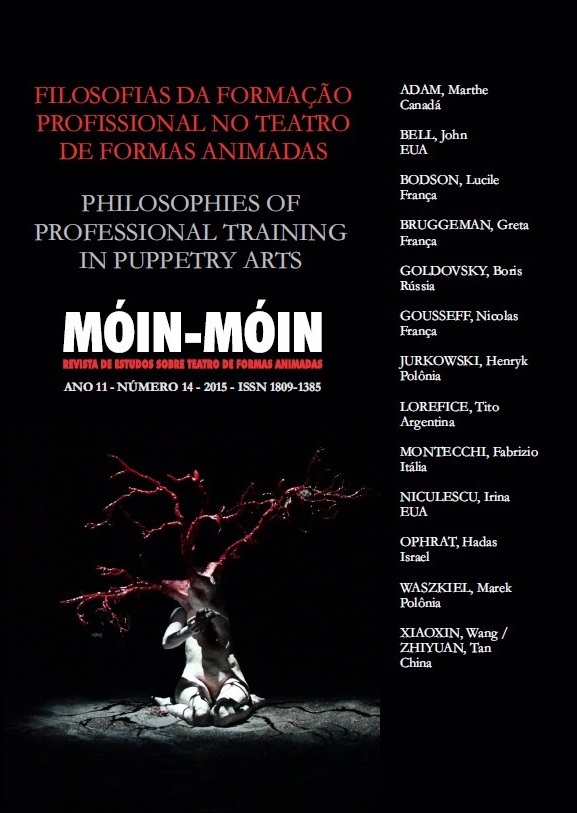A história e a narração – Perspectivas de formação no Teatro de Formas Animadas Contemporâneo
DOI:
https://doi.org/10.5965/2595034702142015124Abstract
Um projeto de qualidade e uma atuação virtuosa nem sempre produzem um
bom espetáculo. Eles não são suficientes. Também não basta a soma total dos elementos da cena. A encenação é um ofício focado principalmente na construção de novas relações complexas entre os vários elementos: entre a história e a interpretação, os bonecos e os performers, os personagens e sua função e entre a história e a narração. Este artigo analisa as práticas de ensino estabelecidas por Ophrat através de quatro exercícios que tratam, respectivamente, de: (a) a função do corpo na forma como ele reflete na
relação entre o performer e os bonecos, (b) a utilização separada de som e ação, sendo originados a partir de diferentes fontes, (c) a ideia da dualidade do boneco como um papel dramático e (d) a compreensão de que tudo em teatro de formas animadas pode ser manipulado, inclusive o espaço.
Palavras-chave: Teatro visual. Narração de histórias. Sujeito-objeto.
Downloads
Downloads
Published
How to Cite
Issue
Section
License
The readers are free to transfer, print and use the articles published in the Magazine, as long as there’s explicit mention to the author(s) and to Móin-Móin Magazine - Studies in Theater of Animated Forms and there are no changes on the original work. Any other use of the texts needs to be approved by the author(s) and the Magazine. In submitting an article to Móin-Móin Magazine - Studies in Theater of Animated Forms and have it approved, the author(s) agree to give away, without payments, the following rights to the Magazine: first publishing rights and the license for the Magazine to redistribute this article and its metadata to index and reference services that the editors consider appropriate.
The articles whose author(s) are identified represent the author’s point of view and not the official position of Móin-Móin Magazine. The author(s) commit to always mention the publication in the following way when publishing work in reference to the article published in Móin-Móin Magazine:
“This article was originally published by Móin-Móin Magazine volume (insert the volume), number (insert the number), in the year of (insert year) and can be accessed on: http://www.revistas.udesc.br/index.php/móin"
Plagiarism in any way constitutes an unethical publishing behavior and is unacceptable. Móin-Móin Magazine holds the right to use software or other plagiarism tracking methods to scan the submitted works.
![]()
This journal uses Attribution-NonCommercial 4.0 International– (CC BY NC 4.0).






